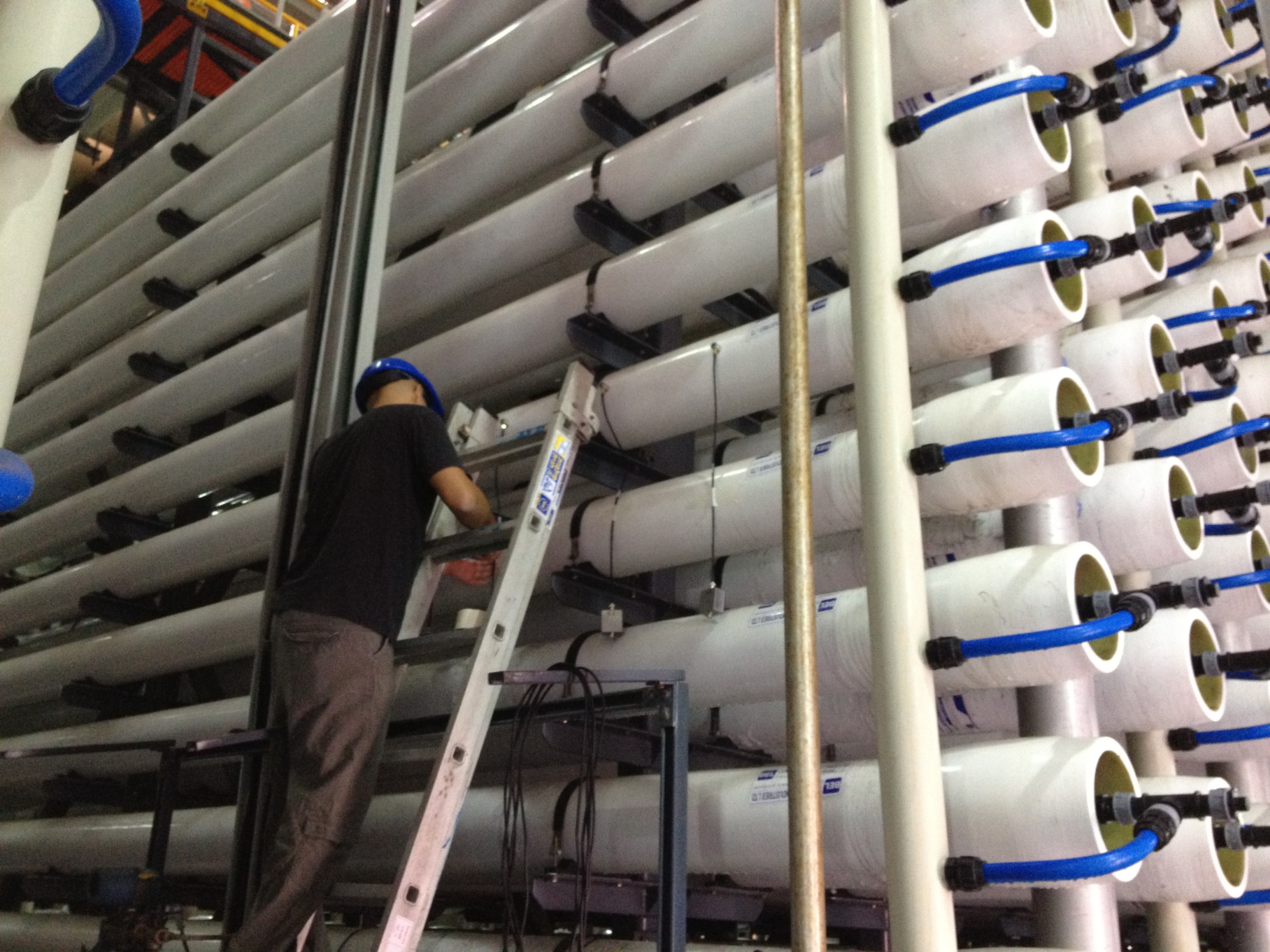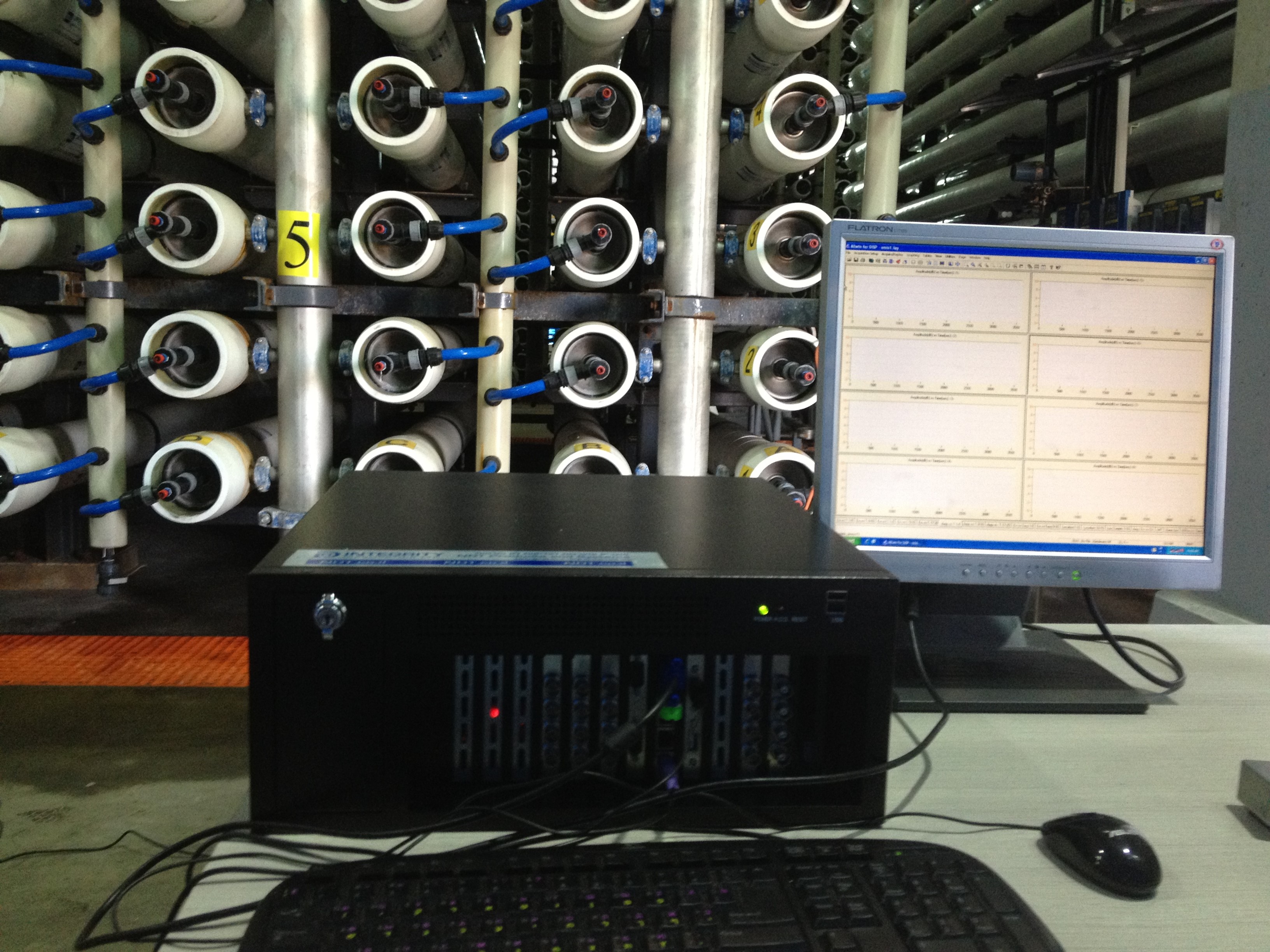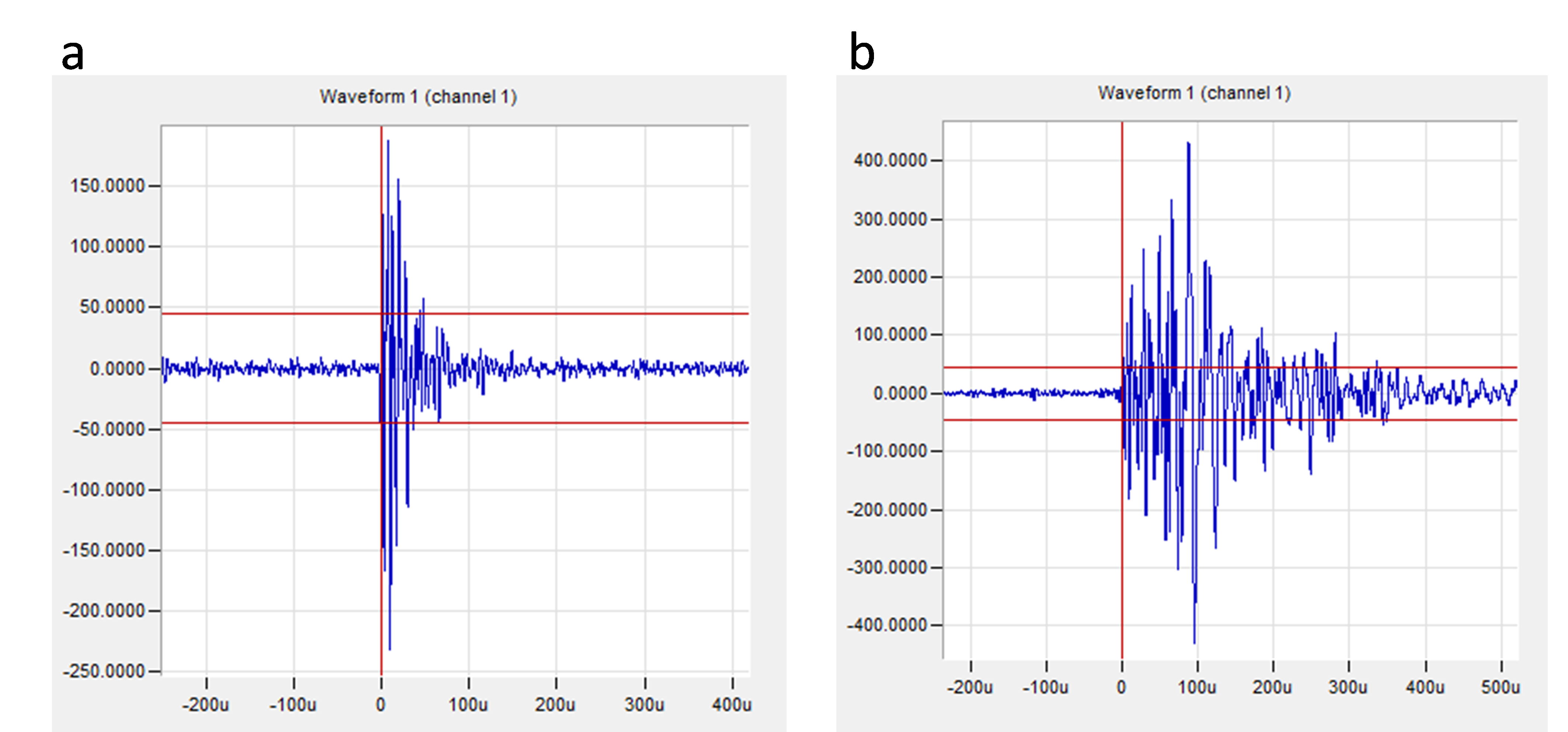Reverse-Osmosis FRP Pressure Vessels On-line Diagnostic Acoustic Emission Inspection
Reverse-osmosis desalination is one of the most popular technologies used today for a large scale sea water desalination. Reverse osmosis process removes salts and impurities from sea water by pushing it through membrane filters under pressure. One of the main components of the desalination reverse-osmosis process are fiber reinforced plastics (FRP) pressure vessels that are used as pressure housing of reverse-osmosis filters. Typically there are hundreds of such pressure vessels in each facility connected serially into trains. FRP vessels are typically several meters long and operate under relatively high pressure.
Failure of FRP vessels during operation can occur in different ways. One of the common failure scenarios is leak before burst which results in detectable leak. But another type of failures can lead to catastrophic circumstances. There are recorded cases of catastrophic rupture of vessels before a visible leak could be detected. Such violent failure may result in large parts of vessels flying and endangering people around. Failures of vessels also interrupt operation and lead to significant economic losses if occur often and randomly.
Diagnostic Acoustic Emission technology is an effective tool for on-line inspection and monitoring of FRP vessels used in reverse-osmosis process because:
- Easy to install system with few sensors used for inspection of entire vessel under normal operational pressure.
- AE detects effectively matrix cracking, delamination growth and fiber breakage and can identify flawed vessels long before they fail.
- Using special AE analysis methods it is possible not only to detect flaw indications but to distinguish between them and assess their significance to the structural integrity of the vessel.
- In addition to flaw related activity, AE technology is used to detect leaks those difficult to identify by other means.
- Once defective vessels are identified, they can be effectively monitored to the moment when replacement is required.
 |
 |
| Installation of AE system on FRP vessels | AE monitoring of several FRP vessels |
Typical signal of matrix cracking (left) and delamination development (right) in the examined FRP vessels.
Acoustic Emission standards
Acoustic Emission one of the standard non-destructive test methods with several dozens of standards, procedures and test methods issued by various international organizations such as ASTM, ASME and others. Here are some relevant standards, codes and documents related to use of Acoustic Emission technology for FRP vessels:
- ASME STP-PT-023 – Guidelines for In-service Inspection of Composite Pressure Vessels.
- ASME Standard: Section V, Article 11, Subsection A, Section V, Boiler and Pressure Vessel Code, Acoustic Emission Examination of Fiber-Reinforced Plastic Vessels.
- ASME Standard: Section V, Article 13, Boiler & Pressure Vessel Code, Continuous Acoustic Emission Monitoring.
- ASTM E 1067 Standard Practice for Acoustic Emission Examination of Fiberglass Reinforced Plastic Resin (FRP) Tanks/Vessels.
- ASTM E 1118 Standard Practice for Acoustic Emission Examination of Reinforced Thermosetting Resin Pipe (RTRP).
- ASTM E 1211 Standard Practice for Leak Detection and Location Using Surface-Mounted Acoustic Emission Sensors.
- ASTM E 569 Standard Practice for Acoustic Emission Monitoring Of Structures during Controlled Stimulation.
AE unique advantages
- Examination of 100% of structure without interruption of operation.
- Reliable detection flaws and leaks.
- Evaluation of flaw propagation rate.
- Differentiating between developing and non-developing flaws.
- Quantitative long-term monitoring of flaws.
- Prioritization of vessels for maintenance and repair.
